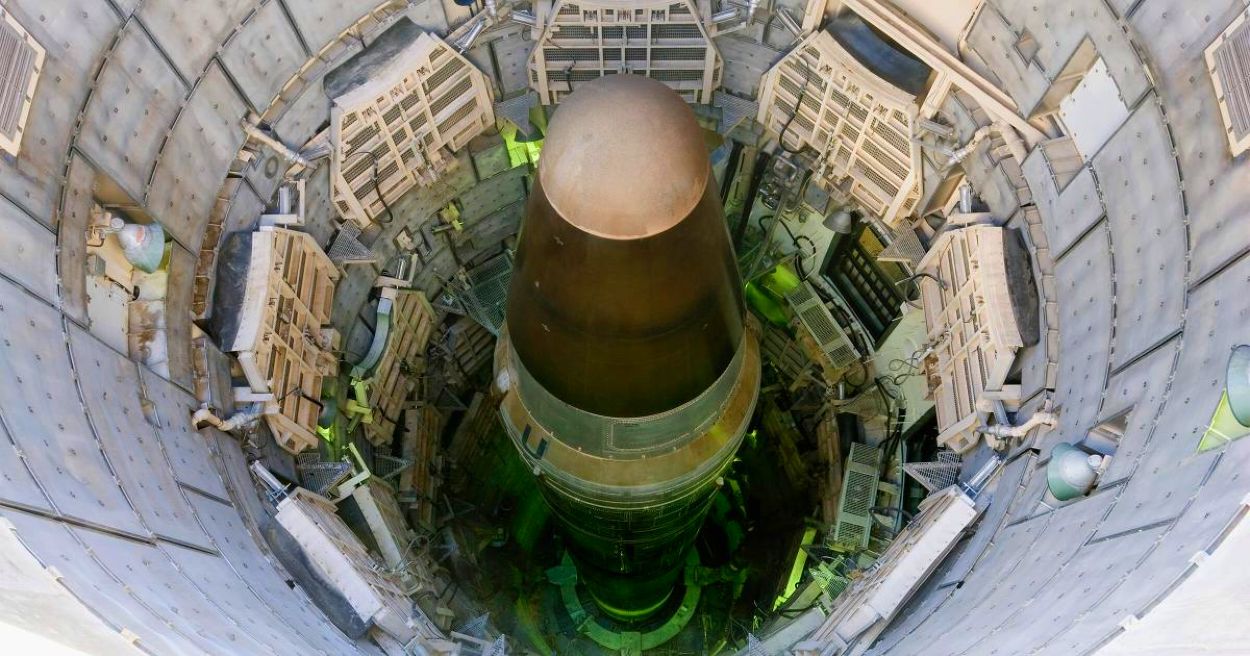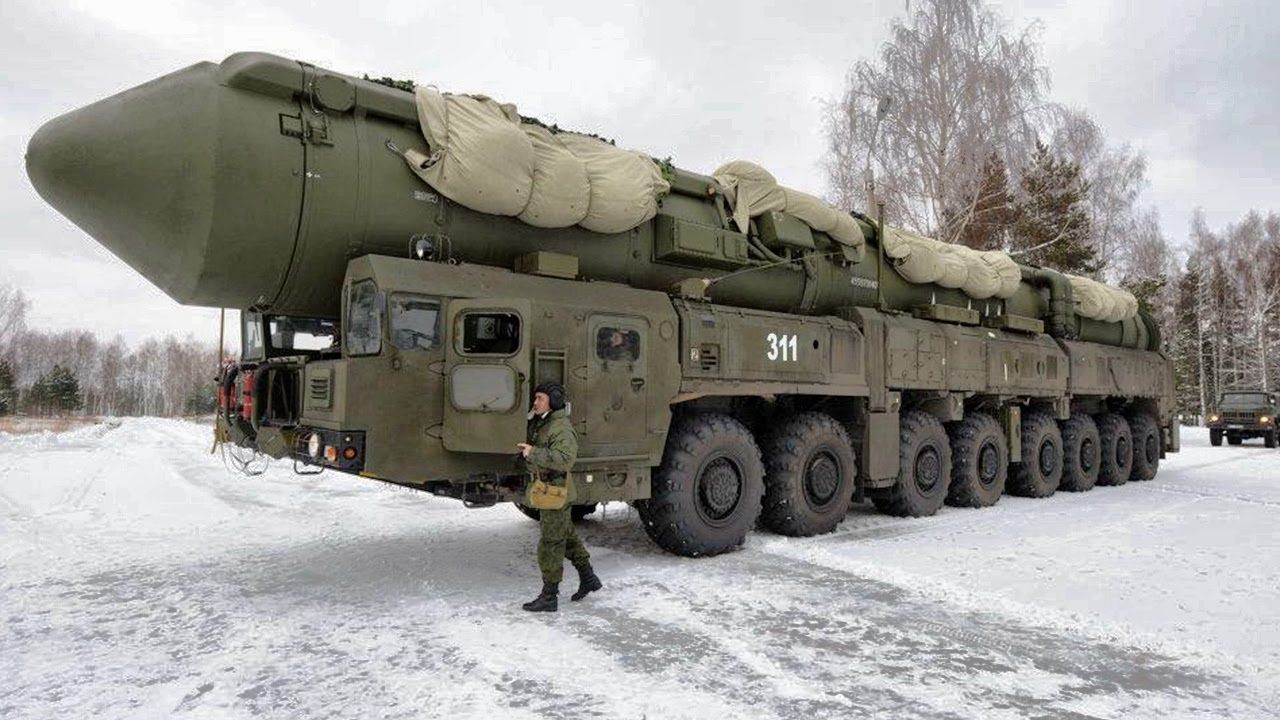Ukraine War ‘Setbacks’ Pushing Russia Towards Nuclear Options; Pentagon Intel Warns Of Nuke War

A new report from the United States Defense Intelligence Agency (DIA) highlights a concerning trend: Russia’s military setbacks in Ukraine may be pushing the nation toward greater reliance on its nuclear arsenal as a cornerstone of its military strategy.
This report, “Nuclear Challenges: The Growing Capabilities of Strategic Competitors and Regional Rivals,” assesses foreign adversaries’ current nuclear strengths.
“The weakness exhibited by Russia’s conventional forces in their invasion of Ukraine may increase Moscow’s reliance on nuclear capabilities going forward,” says the report.
The DIA suggests a significant possibility that if Russia faces severe setbacks in Ukraine, President Putin might consider the use of nuclear weapons.
Russian Nuclear Rhetoric
The DIA’s report draws a direct connection between Russia’s conventional military struggles in Ukraine and its increasingly aggressive nuclear rhetoric.
Since Russia expanded its war on Ukraine in February 2022, Russian leaders have employed rhetoric evoking Russian nuclear weapon capabilities in order “to influence Western action,” the report noted.
Both Russian President Putin and former President Dmitry Medvedev have issued statements that either explicitly or implicitly indicated that Russia might resort to nuclear strikes if it perceives an existential threat. For instance, in September 2022, Putin asserted he was “not bluffing” when discussing the potential use of nuclear weapons to defend Russian territory.
Notably, Russia has held the world’s largest foreign nuclear stockpile for the past four years, a testament to its sustained focus on nuclear deterrence and global strategic power.
Russia’s Nuclear Arsenal
Russia, which inherited a vast nuclear program from the former Soviet Union, had a peak inventory of 40,000 warheads in 1986.
AfriPrime App link: FREE to download...
Today, it maintains around 1,550 deployed strategic warheads and up to 2,000 non-strategic warheads. While the numbers are lower, the weapons are now more lethal. The information in the report is current as of June 1, 2024.
It is clear that although the number of nuclear warheads has decreased since the Cold War, the lethality of these weapons has significantly increased.
Russia’s nuclear military capabilities span a wide range of weaponry, including Air-Launched Cruise Missiles (ALCMs), Air-to-Surface Missiles (ASMs), Air-to-Air Missiles (AAMs), Anti-Ballistic Missiles (ABMs), Anti-Ship Cruise Missiles (ASCMs), Anti-Submarine Weapons (ASWs), Close-Range Ballistic Missiles (CRBMs), Depth Charges, Gravity Bombs, Ground-Launched Cruise Missiles (GLCMs), Hypersonic Glide Vehicles (HGVs), Intercontinental Ballistic Missiles (ICBMs), Ship-Launched Cruise Missiles (SLCMs), Short-Range Ballistic Missiles (SRBMs), Submarine-Launched Ballistic Missiles (SLBMs), and Surface-to-Air Missiles (SAMs).
In addition, Russia is developing new systems such as Air-Launched Ballistic Missiles, Coastal Defense Cruise Missiles, nuclear-armed, nuclear-powered underwater vehicles, and nuclear-powered ground-launched cruise missiles.
Russia is also expanding its arsenal of non-strategic nuclear weapons (NSNWs), adding capabilities deployable by its navy, air force, and ground forces.

Nuclear Modernization Efforts
ROSATOM, Russia’s state corporation overseeing nuclear capabilities, manages both civil nuclear power and military nuclear development.
It is responsible for the design, testing, production, and dismantling of nuclear warheads across multiple facilities. As part of a nuclear modernization effort, Rosatom is expanding its warhead production capabilities, consistently producing new warheads each year.
In 2015, President Putin announced plans to produce over 40 ICBMs/SLBMs, each capable of carrying up to six warheads—indicating that Russia likely produced more than 200 nuclear warheads in that year alone.
In early 2018, President Putin unveiled advanced nuclear weapons that he claimed could evade current US countermeasures, including the Sarmat ICBM, Avangard hypersonic glide vehicle, Kinzhal hypersonic missile, Skyfall nuclear-powered cruise missile, and Poseidon nuclear-powered underwater vehicle.
In 2021, Russia allocated roughly $8.6 billion to bolster its nuclear triad, which includes ICBMs, SLBMs, and heavy bombers.
Hospital Management Platform SaaS.. Hospital and Patients management system perfect for all medicals.
Partnership/Agent Needed. Earn As You Go on monthly basis.
Contact Admin: admin@healthdata101.com
+++++++++++++++++++++++++++++++++++++++++++++++++++++
Russia’s nuclear modernization aims “to replace Soviet-era weapons with modern systems,” maintain parity with the U.S. nuclear arsenal, enhance survivability and efficiency, and preserve Russia’s global prestige. The report says this modernization extends across both strategic and non-strategic nuclear arsenals.

Strategic Implications
Russia’s nuclear doctrine maintains these weapons are primarily for deterrence but allows their use in response to perceived existential threats. This includes threats from ballistic missiles, other weapons of mass destruction, or massed conventional strikes that could threaten the Russian state’s existence.
The DIA report places Russia’s nuclear developments within a broader context of global nuclear proliferation, particularly noting concerns about the “CRINK” alliance—China, Russia, Iran, and North Korea.
The US has expressed concerns about an informal alliance between China, Russia, Iran, and North Korea, referred to as “CRINK,” which Washington policymakers often label as an “Axis of Evil.” As these nations are actively modernizing their nuclear arsenals with advanced technologies designed to penetrate or evade missile defense systems.
“Our competitors and potential adversaries are investing heavily in new nuclear weapons and associated delivery systems,” the DIA report noted.
Growing Global Concern
The combination of Russia’s conventional military challenges, aggressive nuclear rhetoric, and ongoing modernization of its nuclear arsenal presents a significant security challenge.
It has been 2 years and 8 months since Russia invaded Ukraine on February 24, 2022. The DIA’s assessment suggests that as Russia continues to face difficulties in Ukraine, its threshold for considering nuclear weapons use might be lower, making the international security landscape increasingly complex and volatile.
This situation underscores the enduring threat posed by nuclear weapons, which remain the most destructive and indiscriminate weapons ever created, capable of causing widespread devastation and long-lasting radioactive contamination, unlike any other weapon system in existence.
AfriPrime App link: FREE to download...
- Questions and Answers
- Opinion
- Story/Motivational/Inspiring
- Technology
- Art
- Causes
- Crafts
- Dance
- Drinks
- Film/Movie
- Fitness
- Food
- Игры
- Gardening
- Health
- Главная
- Literature
- Music
- Networking
- Другое
- Party
- Religion
- Shopping
- Sports
- Theater
- Wellness
- News
- Culture
- War machines and policy

